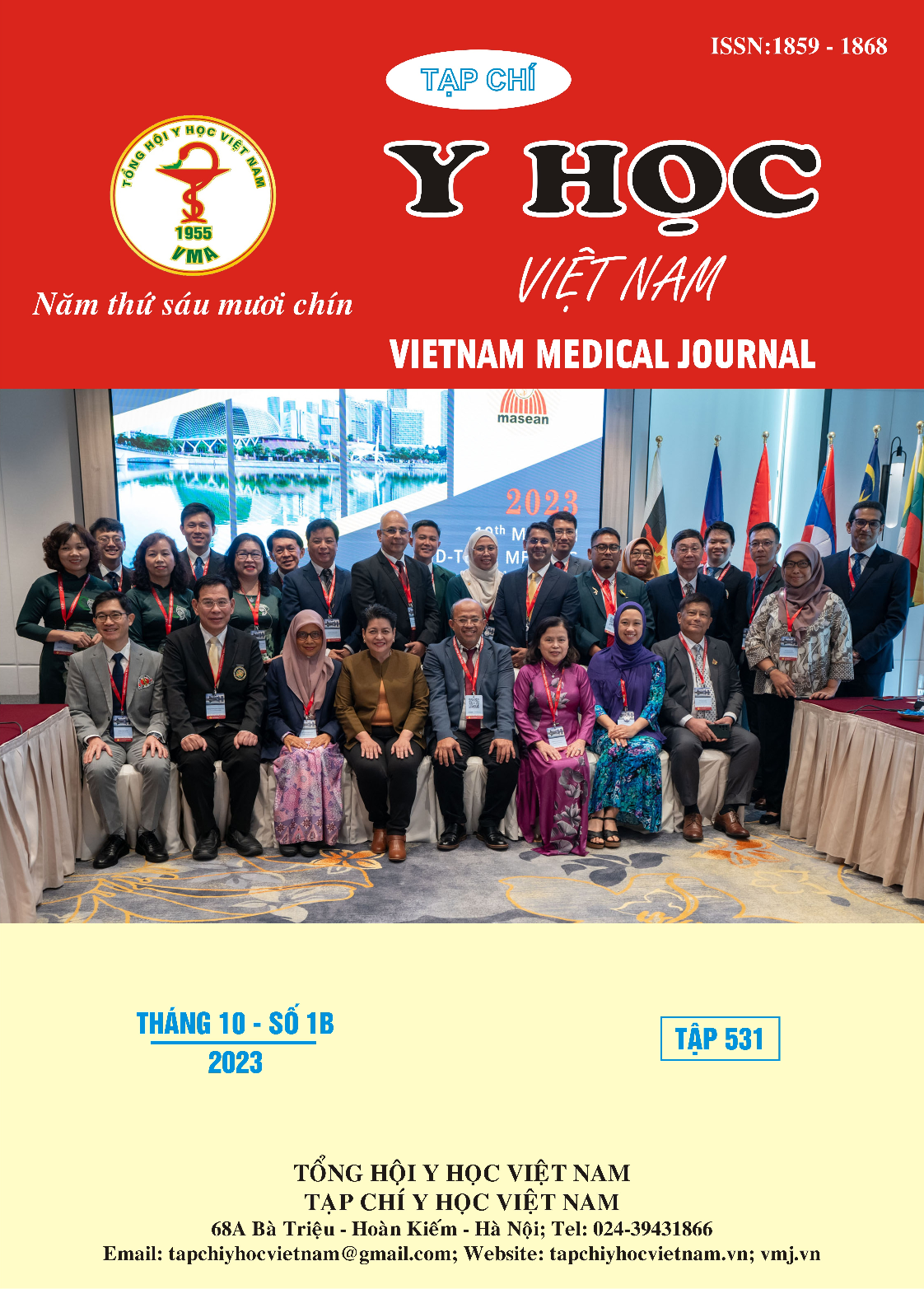EPIDEMIOLOGICAL CHARACTERISTICS AND TREATMENT RESULTS OF PEDIATRIC PATIENTS WITH SEVERE HEART FAILURE DUE TO CONGENITAL HEART FAILURE THERE IS INCREASED BLOOD FLOW TO THE LUNGS
Main Article Content
Abstract
Objective: To describe the epidemiological and paraclinical characteristics of patients with severe congenital heart failure with increased blood flow to the lungs. Subjects and research methods: Cross-sectional descriptive study, convenience sampling. All patients with server heart failure (class IV) due to congenital heart disease with increased blood flow according to Ross classification are treated at Cardiovascular resuscitation unit - Department of Cardiology - Cardiovascular Center - of the National Children's Hospital from August 2021 to July 2022. Results: Forty two patients with mean age of 5.49 ±4,6 months old from 2 months old to 6 years old, average weight 8,32 ± 5,67.kg. The most common disease was ventricular septal defect (33.2%). The average length of stay in hospitals of the successful group is 7.26 ± 5.67 days and the failure group are 14.2 ± 2.8 days (p > 0.05). Other disease when patients hopitalizing were pneumonia (33%), acute diarrhea accounted for 21.4%, urinary infection 16.7%. all patients were treated with drugs; surgical diseases accounted for 35.7%. There are 7.14 % of patients receiving intervention. The symptoms of dyspnea, tachycardia and hepatomegaly and the manifestations of enlarged heart on chest X-ray, ventricular thickening, and decreased EF all improved after treatment (p<0.01). Conclusion: Ventricular septal defect is the most common congenital heart in the group of congenital heart with increased blood flow to the lungs, accompanying diseases in respiratory failure are mainly pneumonia, acute diarrhea. The clinical and subclinical symptoms of the studied patients mostly improved after treatment
Article Details
Keywords
severe heart failure, congenital heart failure with increased blood flow to the lungs
References
2. Nandi D, Rossano J.W. Epidemiology and cost of heart failure in children. Cardiol Young. 2015;25(8):1460–8.
3. Đặng Vạn Phước CNH, Trương Quang Bình,. Sinh lý bệnh của suy tim. Suy tim trong thực hành lâm sàng Nhà xuất bản Y học, Hà nội. 2014:15–29.
4. Ross RD. The Ross Classification for Heart Failure in Children After 25 Years: A Review and an Age-Stratified Revision. Pediatr Cardiol 2012;33:1295–300.
5. Liang Yy Md P, Ai S, Weng F, Feng H, Yang L, He Z, et al. Associations of Childhood Maltreatment and Genetic Risks With Incident Heart Failure in Later Life. J Am Heart Assoc. 2022;11(20):e026536.
6. Wright LK, Zmora R, Huang Y, Oster ME, McCracken C, Mahle WT, et al. Long-Term Risk of Heart Failure-Related Death and Heart Transplant After Congenital Heart Surgery in Childhood (from the Pediatric Cardiac Care Consortium). Am J Cardiol. 2022;167:111-7.
7. Anh Vinh Ngô, Hữu Hoà Phạm. Kết quả điều trị suy tim ở trẻ em tại bệnh viện Nhi Trung Ương. Tạp chí Y Học Việt Nam. 2022;512:184.
8. Pendergrast TR, Chapin CA, Kriegermeier AA, Pardo AC, Bass LM, Sanchez-Pinto LN. Heart rate variability is associated with encephalopathy and outcomes in pediatric acute liver failure. Pediatr Res. 2023;93(5):1348-53.
9. Isezuo KO, Sani UM, Waziri UM, Garba BI, Coker LK, Folorunsho A. Pattern and outcome of heart failure amongst children admitted in an emergency pediatric unit of a Tertiary Hospital in Sokoto State, North-Western Nigeria. Nigerian Journal of Basic and Clinical Sciences. 2022;19(2):126.


